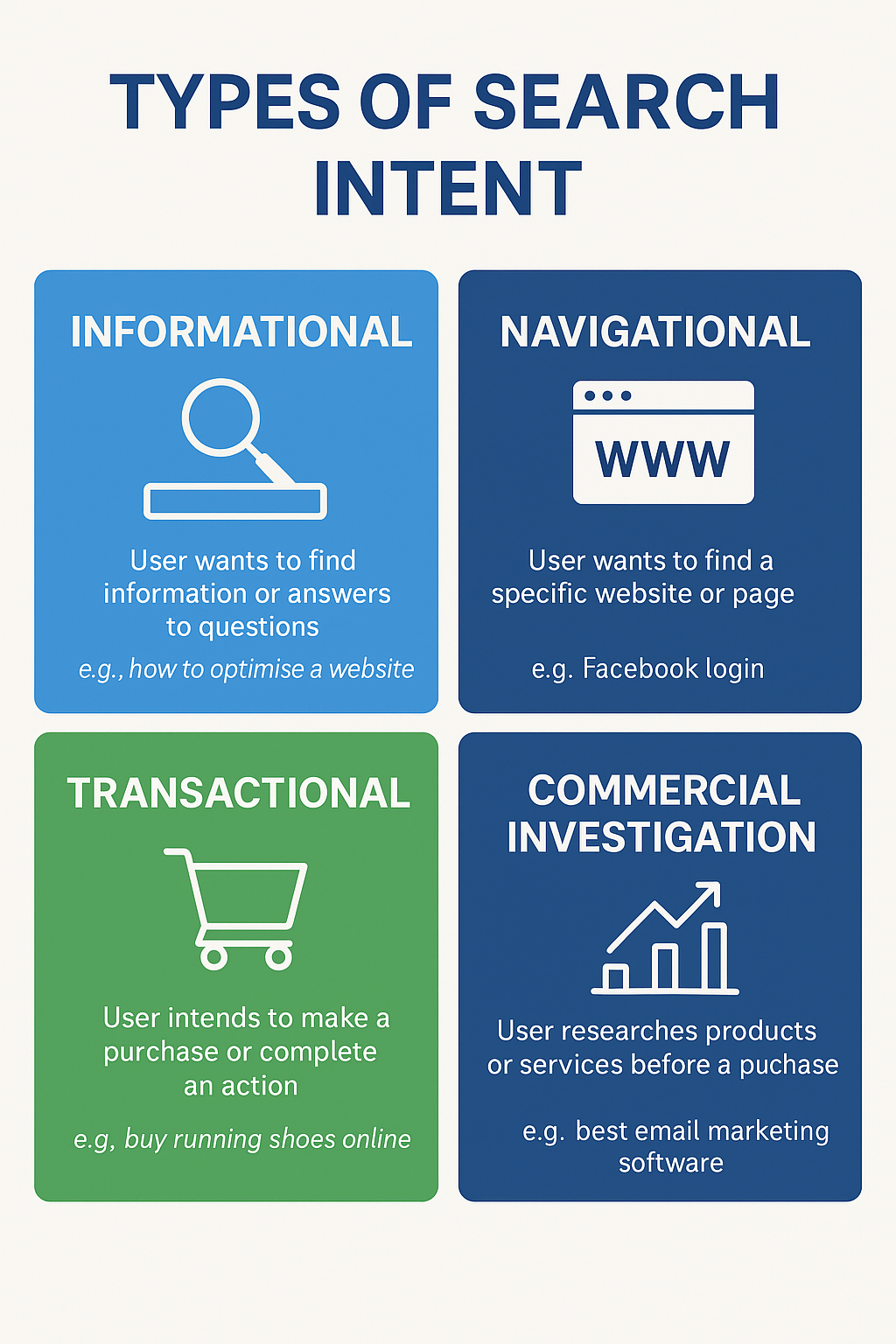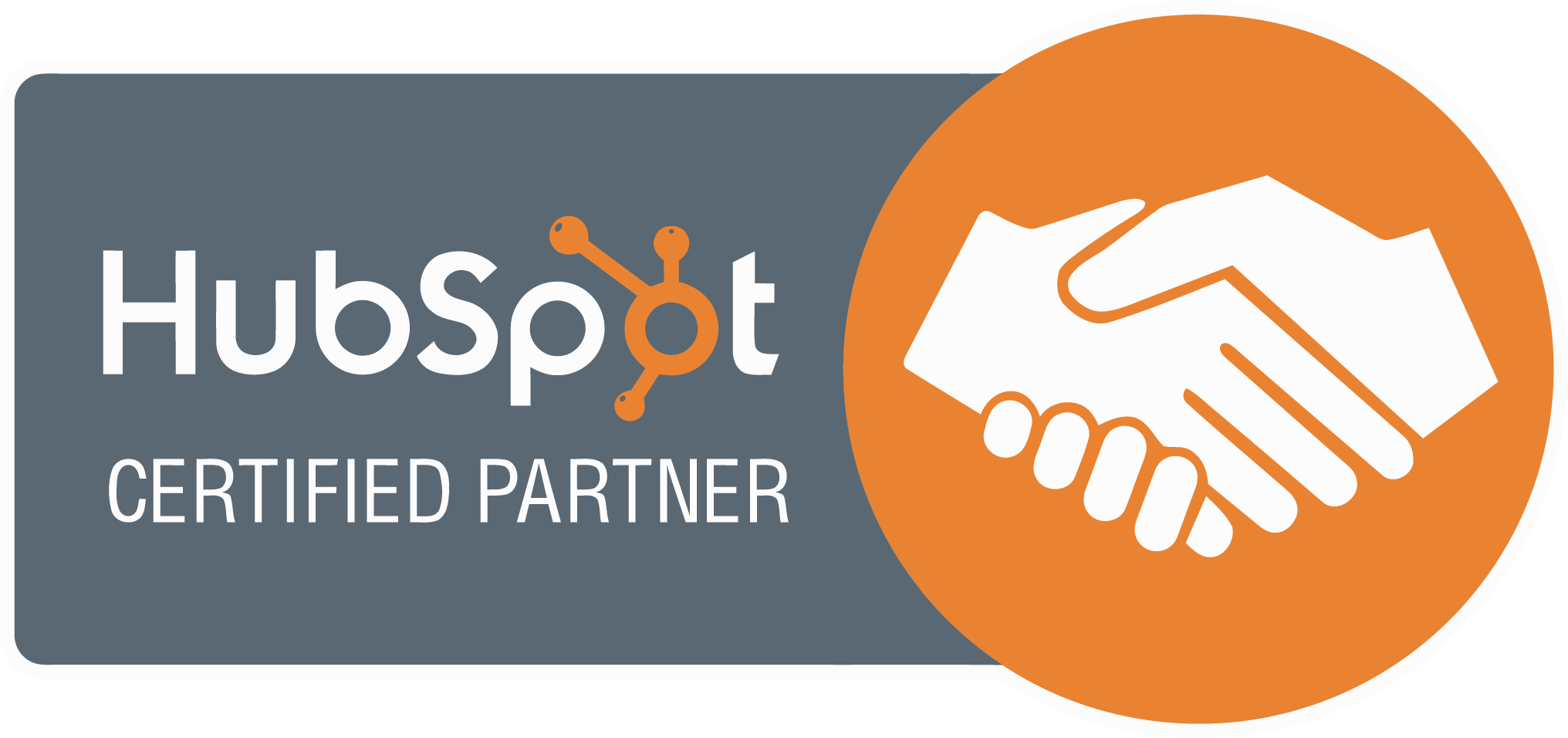Key Take Aways
- Learn what search intent is and why it’s crucial for SEO success.
- Understand the four types of search intent: informational, navigational, transactional, and commercial.
- Discover how to optimise your content strategy to match user intent and improve rankings.
What Is Search Intent?
Search intent refers to the reason behind a user’s query. It’s what the person really wants to know, do, or find when they enter a search term.
Google’s algorithms have become incredibly good at interpreting intent—and websites that deliver the right content for the right intent are rewarded with better rankings.
There are four main types of search intent:
- Informational – The user is looking for knowledge (e.g. “how to improve SEO”).
- Navigational – The user wants to visit a specific site (e.g. “Amire Digital login”).
- Transactional – The user is ready to buy or take action (e.g. “SEO services Sydney”).
- Commercial Investigation – The user is comparing or researching (e.g. “best SEO agency in Sydney”).
Why Search Intent Matters More Than Ever
Google doesn’t just rank pages based on keywords. It ranks them based on how well they satisfy the user’s intent.
If your page targets the right keyword but fails to match the intent, it’s unlikely to perform well. This is especially true for high-competition keywords.
Example:
If someone searches for “email marketing software comparison,” Google will prioritise listicles and reviews, not product pages.
How to Optimise for Search Intent
1. Identify the Intent Behind Each Keyword
Use tools like Google Search, Ahrefs, or SEMrush to analyse the top-ranking pages for your target keyword. Ask:
- Are the top results blog posts, product pages, or guides?
- What do these pages help users accomplish?
2. Match the Format to the Intent
Once you know the intent, choose the right content format:
- Informational: Blog posts, how-to guides, videos
- Navigational: Homepage, login pages, brand pages
- Transactional: Product or service pages
- Commercial: Comparison pages, testimonials, buying guides
3. Write Content That Truly Satisfies the Query
Don’t just include keywords—answer the question better than anyone else. Provide:
- Clear structure (headings, bullet points)
- Trust signals (testimonials, certifications)
- Actionable tips or next steps
4. Update and Improve Existing Content
Review underperforming content and ask:
- Does this content match the current top-ranking intent?
- Can I better align the headline, format, or CTA?
Amire’s content marketing experts can help with keyword mapping and content refinement.
Measuring Success: How to Know If You’re Hitting the Mark
Keep an eye on:
- Bounce rate – A high bounce rate can signal a mismatch between your content and user intent
- Time on page – Longer sessions often indicate your content is helpful
- Conversion rate – For transactional queries, are users converting?
SEO success isn’t just about visibility—it’s about meeting expectations. Our SEO team can help you understand the true intent behind the traffic you’re receiving.
Final Thoughts: Why Intent Drives Modern SEO
Ignoring search intent is like shooting arrows in the dark. You might hit something—but it won’t be consistent, and it won’t scale.
Modern SEO is no longer just about ranking for keywords. It’s about delivering exactly what your users want—when they want it.
Need help aligning your SEO with user intent? Contact Amire for a strategy that brings long-term results.









